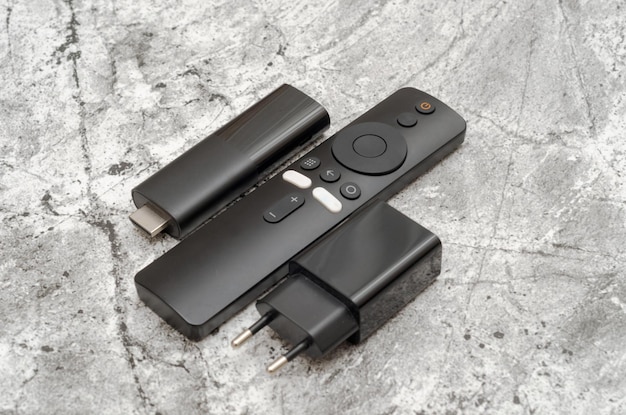Cord-Cutting Guide: Save $75/Month with Streaming Services

Cord-cutting offers a strategic shift from traditional cable TV to streaming services, potentially saving the average U.S. household around $75 monthly through tailored subscriptions and reduced equipment costs.
Are you tired of sky-high cable bills filled with channels you never watch? Our Cord-Cutting Guide: Ditch Cable and Save $75 Monthly with Streaming Services will show you how to break free and customize your entertainment while keeping more money in your pocket.
Why Consider Cord-Cutting?
The allure of cutting ties with traditional cable has grown significantly, and for good reason. Beyond the enticing promise of substantial cost savings, cord-cutting offers individuals and families a more tailored and customizable approach to their entertainment consumption. It’s a shift towards greater control and flexibility.
The Rising Costs of Cable
One of the primary drivers behind the cord-cutting movement is the ever-increasing cost of cable television. Cable packages often include hundreds of channels, the vast majority of which go unwatched by the average subscriber. You’re essentially paying for content you don’t use.
Benefits of Streaming Alternatives
Streaming services provide a more a la carte approach. You subscribe only to the services that offer the content you actually want to watch. This targeted approach translates directly into lower monthly bills and reduced waste.
- Cost Savings: Reduce your monthly entertainment expenses significantly.
- Flexibility: Choose services based on your viewing preferences and cancel anytime.
- Variety: Access a wider range of content, including original programming and on-demand libraries.
In conclusion, the shift towards cord-cutting is motivated by the desire for more affordable, customizable, and varied entertainment options, allowing consumers to take control of their viewing preferences and budgets.
Assessing Your Viewing Needs
Before diving into the world of streaming, it’s essential to take stock of your household’s viewing habits and preferences. This self-assessment will serve as a compass, guiding you towards the streaming services that best align with your entertainment needs.

Identifying Key Channels and Shows
Begin by creating a list of the channels and shows that are most frequently watched in your household. Don’t just think about what you watch, but also when you watch it. Do you tune in live for sports, or are you primarily interested in on-demand content?
Evaluating Streaming Service Offerings
Once you have a clear picture of your viewing preferences, you can begin to explore the offerings of various streaming services. Many services provide free trials, allowing you to test the waters before committing to a subscription. Take advantage of these trials to ensure the service offers the content you’re looking for.
- Consider Bundling: Some services offer discounts when you bundle multiple subscriptions.
- Check for Local Channels: If you rely on local news and programming, ensure the streaming service carries your local affiliates.
- Read Reviews: Before subscribing, read reviews from other users to get a sense of the service’s reliability and user-friendliness.
By carefully assessing your viewing needs and comparing them to the offerings of different streaming services, you can craft a personalized entertainment package that delivers value and satisfaction, all while saving money compared to traditional cable.
Popular Streaming Services Compared
The streaming landscape is vast and ever-evolving, which can make choosing the right services seem daunting. This section breaks down some of the most popular options, highlighting their strengths and weaknesses to help you make informed decisions.
Netflix: The Streaming Giant
Netflix is the undisputed king of streaming, boasting a massive library of movies, TV shows, and original programming. It’s a great option for those who want a wide variety of content, but it may not be the best choice for live sports or news.
Hulu: Live TV and On-Demand
Hulu offers a unique blend of on-demand content and live TV. With Hulu + Live TV, you can access many of the same channels you would find on cable, including local networks and popular cable channels. Hulu’s on-demand library is also robust, featuring a mix of classic and contemporary TV shows and movies.
- Disney+: Perfect for families with young children, offering a vast library of Disney, Pixar, Marvel, and Star Wars content.
- Amazon Prime Video: Included with an Amazon Prime subscription, Prime Video offers a growing library of movies, TV shows, and original programming.
- HBO Max: Home to prestige TV shows like “Game of Thrones” and “Succession,” as well as a vast library of movies from Warner Bros.
In short, comparing popular streaming services involves considering content variety, live TV options, family-friendly offerings, and the availability of premium content, allowing consumers to select services that align with their specific entertainment preferences and needs.
Essential Equipment for Cord-Cutting
While streaming services are the heart of cord-cutting, you’ll need a few key pieces of equipment to bring it all together. Fortunately, most modern TVs and devices are streaming-ready, but it’s important to understand your options.
Smart TVs: Streaming Right Out of the Box
Many modern TVs come equipped with smart capabilities, allowing you to access streaming services directly through the TV’s interface. These TVs typically have built-in Wi-Fi and app stores, making setup a breeze.
Streaming Devices: Cost-Effective Alternatives
If your TV isn’t smart, or if you prefer a different interface, streaming devices offer a cost-effective alternative. Devices like Roku, Amazon Fire TV Stick, and Apple TV connect to your TV via HDMI and provide access to a wide range of streaming services.

- High-Speed Internet: A reliable internet connection is crucial for smooth streaming.
- HDMI Cables: Ensure you have the necessary HDMI cables to connect your streaming devices to your TV.
- Antenna (Optional): If you want to access local channels for free, consider purchasing an over-the-air antenna.
To summarize, the essential equipment for cord-cutting includes smart TVs or streaming devices, a reliable high-speed internet connection, suitable HDMI cables, and potentially an over-the-air antenna for local channels, each playing a critical role in enabling seamless and cost-effective streaming entertainment.
Saving Money: Strategies and Tips
The primary motivation behind cord-cutting is often financial. By implementing a few smart strategies, you can maximize your savings and enjoy a more affordable entertainment experience.
Evaluating Subscription Costs
Carefully evaluate the monthly costs of each streaming service you subscribe to. Are you truly getting enough value out of each service to justify the expense? Consider canceling services that you rarely use.
Looking for Bundles and Discounts
Many streaming services offer discounts when you bundle multiple subscriptions together. Look for these deals to save money on your overall entertainment costs. Some mobile providers also offer free streaming subscriptions.
- Rotating Subscriptions: Subscribe to a service for a month or two, binge-watch the shows you want to see, and then cancel until new content arrives.
- Sharing Accounts: Many streaming services allow you to share your account with family members or friends, which can help you split the cost of a subscription.
- Using Free Ad-Supported Services: Consider using free, ad-supported streaming services like Pluto TV or Tubi, which offer a wide range of content without a subscription fee.
In conclusion, strategic financial approaches to cord-cutting involve carefully assessing subscription costs, seeking bundles and discounts, rotating subscriptions, sharing accounts, and utilizing free ad-supported services, all aimed at maximizing savings on entertainment expenses.
Overcoming Challenges and Setbacks
While cord-cutting offers many benefits, it’s not without its potential challenges. Addressing these issues proactively will ensure a smoother and more satisfying transition away from cable.
Dealing with Internet Dependency
A reliable internet connection is essential for streaming. If you experience frequent internet outages or slow speeds, cord-cutting may not be a viable option. Consider upgrading your internet service or exploring alternative providers.
Navigating Channel Availability
Not all channels are available on every streaming service. Before cutting the cord, make sure the services you choose offer the channels and content you want to watch. Use the free trials to test before committing.
- Managing Multiple Apps: Juggling multiple streaming apps can be cumbersome. Consider using a streaming device that offers a unified interface, or familiarizing yourself with the search features of each app.
- Understanding Data Caps: Some internet providers have data caps, which can limit the amount of streaming you can do each month. Monitor your data usage to avoid overage charges.
- Explaining Cord-Cutting to Others: Some family members may resist cord-cutting, especially if they’re used to traditional cable. Explain the benefits of streaming and involve them in the decision-making process.
Concluding, successful cord-cutting requires proactive management of internet dependency, careful channel availability assessment, handling multiple apps, awareness of data caps, and effective communication with family members to address resistance and ensure a positive transition.
| Key Point | Brief Description |
|---|---|
| 💰 Savings | Potential to save $75+ monthly. |
| 📺 Streaming Services | Netflix, Hulu, Disney+, etc. |
| 🌐 Internet | High-speed internet is essential. |
| 🛠️ Equipment | Smart TV or streaming device needed. |
FAQ About Cord-Cutting
▼
Yes, many households save significantly by switching from expensive cable packages to streaming services. The savings depend on your current cable bill and the streaming services you choose. Start by evaluating what you watch and finding equivalent, cheaper options.
▼
For smooth streaming, a minimum speed of 25 Mbps is generally recommended, especially for HD content. If multiple people in your household are streaming simultaneously, you may need a faster connection to avoid buffering or lag.
▼
You can access local channels through an over-the-air (OTA) antenna, which picks up signals broadcast in your area. Many streaming services, like Hulu + Live TV and YouTube TV, also offer local channel options as part of their packages.
▼
No, setting up streaming services is generally straightforward. Most smart TVs and streaming devices have user-friendly interfaces. Simply download the apps for the services you want, log in with your credentials, and start watching.
▼
Popular streaming devices include Roku, Amazon Fire TV Stick, Apple TV, and Chromecast. The best choice depends on your budget and your preferred interface. Many smart TVs have built-in streaming capabilities as well, eliminating the need for an external device.
Conclusion
Cutting the cord offers a compelling path to entertainment freedom and significant cost savings. By carefully assessing your viewing needs, exploring streaming options, and implementing smart strategies, you can create a personalized entertainment experience that aligns with your budget and preferences, all while waving goodbye to those hefty cable bills.





